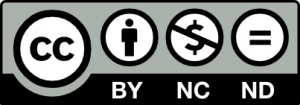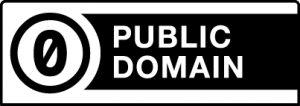Creative Commons Explained
Creative Commons Explained

Creative Commons licenses enable content creators to standardize how they grant permission to others to use their work. There are several types of Creative Commons licenses with different conditions that restrict how others can use the author’s work. Additionally, Creative Commons gives creators the option of dedicating their work to the public domain using their CC0 license.
Below you will find summaries of the conditions associated with the different types of licenses. You will also find links to their respective license deeds, which are easy to read summaries of the full creative commons license. However, to see specific terms and conditions for using the material, you will need to review each license’s full legal code.
CC BY (Attribution)This license allows others to distribute, remix, adapt, and build upon the material in any medium or format, provided the original creator is given credit for the initial creation. The license also allows for commercial uses of the material. |
 |
CC BY-SA (Attribution-ShareAlike)This license allows others to distribute, remix, adapt, and build upon the material, so long as attribution is given to the creator and the creations are licensed under identical terms. This license also allows for commercial uses of the creator’s work. |
 |
CC BY-ND (Attribution-NoDerivatives)This license allows others to use the creator’s work for any purpose, but the work cannot be adapted, and you must credit the original creator. This license also allows for commercial uses of the material. |
 |
CC BY- NC (Attribution-Non-commercial)This license allows others to distribute, remix, adapt, and build upon the material, but only for non-commercial purposes, and they must acknowledge the original creator. |
 |
CC BY-NC-SA (Attribution-Non-commercial-ShareAlike)This license allows others to remix, adapt, and build upon the material non-commercially; however, credit must be given to the creator, and the new creations must be licensed under identical terms. |
 |
CC BY-NC-ND (Attribution-NonCommerical-NoDerivatives)This license allows others to copy and distribute the material, but they must credit the creator, cannot use the work for commercial purposes, and cannot change the materials in any way. This is the most restrictive type of Creative Commons licensing available. |
 |
CC0 (Public Domain Dedication)CC0, also known as CC Zero, is a public dedication tool, which allows creators to give up their copyright and put their works into the worldwide public domain. CC0 allows others to distribute, remix, adapt, and build upon the material in any medium or format, with no conditions. |
 |
Previous Chapter I Next Chapter
Media Attributions
- CC.logo.large © Creative Commons is licensed under a CC BY (Attribution) license
- BY © Creative Commons is licensed under a CC BY (Attribution) license
- BY-SA © Creative Commons is licensed under a CC BY (Attribution) license
- BY-ND © Creative Commons is licensed under a CC BY (Attribution) license
- BY-NC © Creative Commons is licensed under a CC BY (Attribution) license
- BY-NC-SA © Creative Commons is licensed under a CC BY (Attribution) license
- BY-NC-ND © Creative Commons is licensed under a CC BY (Attribution) license
- CC-Zero © Creative Commons is licensed under a CC BY (Attribution) license

